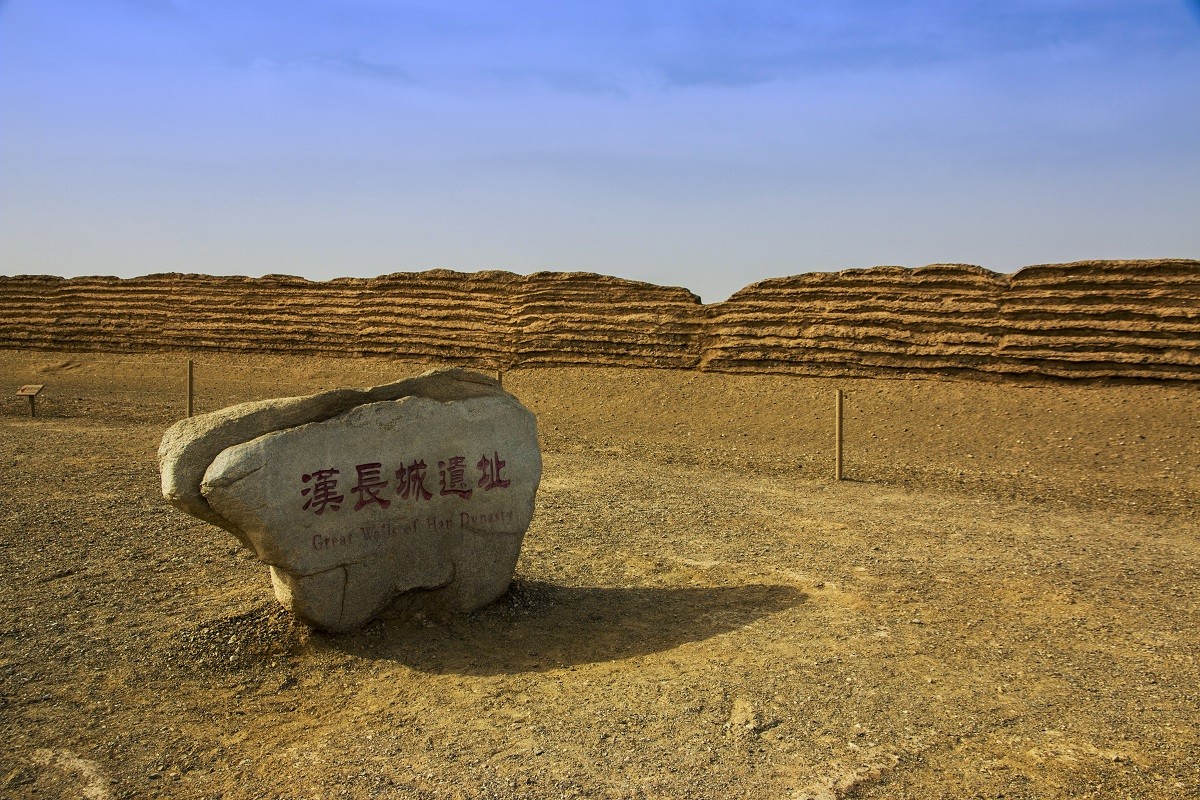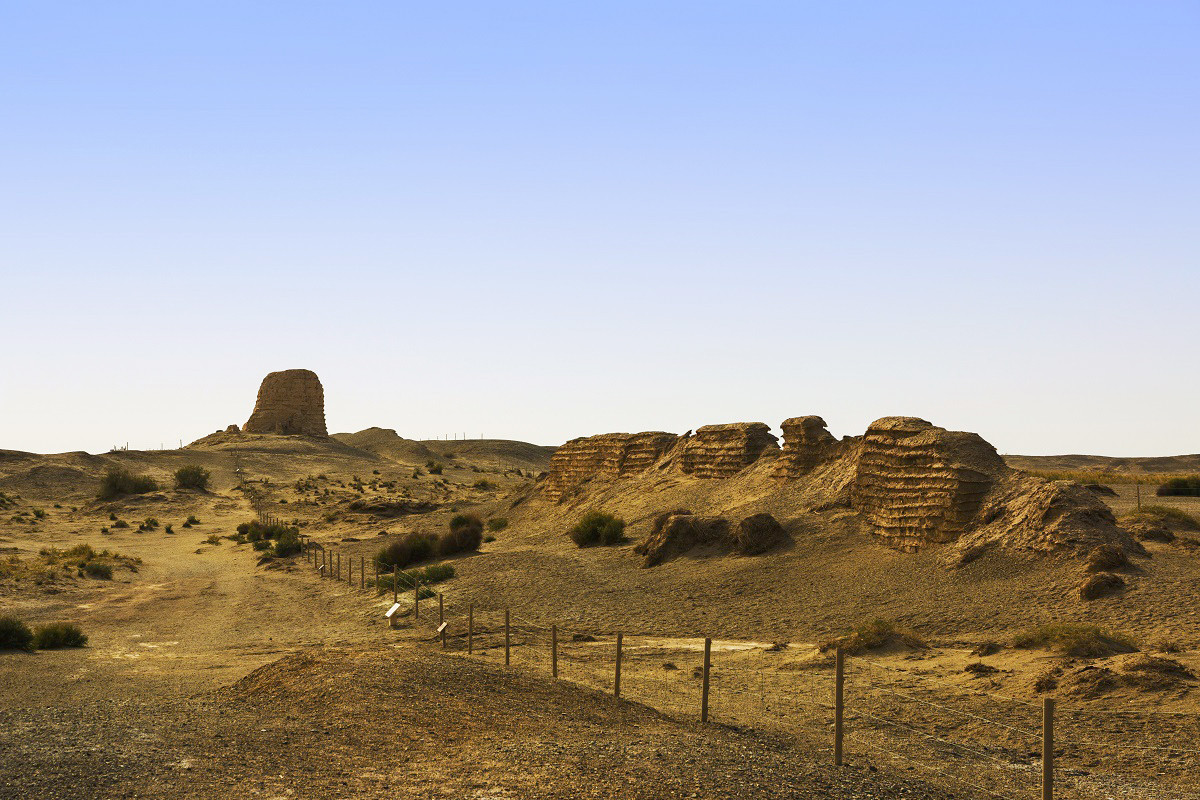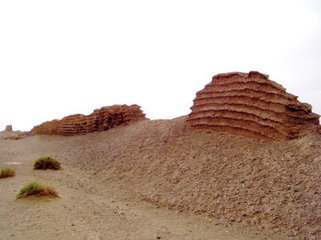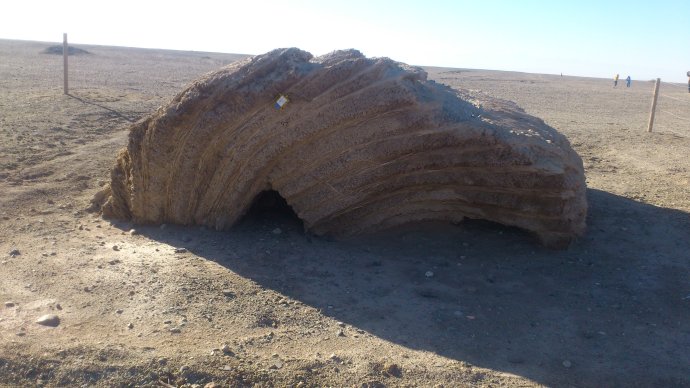Home > Attractions >
Great Wall of Han Dynasty Fire Beacons and Piled Firewoods
As one of the most significant ancient defense system along the silk road, although it is not as famous as Badaling or Mutianyu Great Wall in Beijing, however, they are one of the most historical and well-preserved Ruins of Han Dynasty.
Introduction of the Great Wall:
The majestic and magnificent Great Wall is a great creation of ancient Chinese and the spirit of unceasing efforts to improve themselves of Chinese nationalities. In the Western Han Dynasty early, the length of the Great Wall of about one thousand kilometers was built through Zhangye, Ejina, Jinta, Jiayuguan Pass, Yumen, Anxi to Dunhuang of Hexi Corridor in order to defend the Central Plain from Xiongnu tribes harassing, guarding the central government, assuring the Silk Road unblocking.
Introduction of the Han Great Wall:
Located in the north of Dunhuang, there are branches of the Great Wall of the Han Dynasty, such as Yumenguan to Yangguan, Yangguan to Danghe River estuary. After more than 2,000 years of wind, rain and sand damage, some of the Great Wall was razed to the ground, and most of the Great Wall was preserved. Among them, the Great Wall of Danggu Tunnel, located on the west side of Yumenguan was well preserved. Its base is 3 metres wide, its residual height is 3 metres, and its top width is 1 metre, it is the most complete section of the Great Wall of the Han Dynasty.
Most of the Great Wall of the Han Dynasty was leveled in the past two thousand years inside Dunhuang with remaining track existed, only a small part of it had its old appearance. The methods of building the Great Wall were various and it was a creation that the Great Wall was built of clay, reeds, the branches of red willows together in the Han Dynasty. Along the Great Wall there remained fire beacons of ancient times, and it was said, a large-size beacon was set up within the distance of ten li and a small-size beacon was set up within the distance of five li. Piled fire woods were prepared to give smoke for an alarm when the enemy came. There remained piled fire woods of old-time near the fire beacons beside the Great Wall, which were solidified together and were as strong as stones after thousands of years passing.
The Structure of the Han Great Wall & Why is worth to visit?
The Great Wall of the Han Dynasty in Dunhuang made full use of the local advantages and geographical location for the material. Fortress walls were built by hamming at some places, while moats were dug at other places. Some legs are the pure natural screen, while others are simple beacon towers and fence-like defense works. Through huge ups and downs of 2,000-year weathering, sand covering and man-made damage, such great walls have completely changed their appearance. Some have been flattened with no sign of existence or just low bank of earth and ditches, so the past charm has disappeared. Only the beacon towers at their ruins are telling people of the trend and history of the Han fortress. Despite the historical regret of advancing sand and retreating human beings, we have more tourist attractions today as clues preserved for mourning the history.
The Admission fees: Free of Charge.
Opening Time:
From 8 AM to 6 PM
Beacon Tower:
Beacon towers are also called smoke towers among other names. In case of any information on the enemy, the towers will make smoke on the day or set fire at night, which is the fastest and most effective method for communication of military information during the ancient times. Besides an ancient alarming system, they can separately play the role of warning and defense. As an essential military defense system, it can be seen everywhere in Dunhuang.
What to visit in Beacon Tower?
Yangguan beacon is now 4.7 meters high, after two thousand years of wind and rain erosion. Nowadays, you can only see some historical sites such as docks, stables and ash piles and so on.
Other information about Beacon Tower:
Yangguan Beacon and Qingshiliang Beacon (respectively in the north and west of the antique beach), the Beacon Tower occupied the commanding heights and stand tall, overlooking the surroundings, the tower is quite stupendous. Meanwhile, it has been an important landmark since ancient times.
When is the best time to visit?
Every April to October is the best time to travel to Dunhuang. Among them, in Summer, the sun is very strong, so sunscreen products are quite essential.
In winter, the climate can be pretty cold, so you have to bring plenty of warm clothes.
The Admission fees: Free of Charge.
Opening Time:
9.00 AM to 8.00 PM (1st January to 31st December)
Related Articles & Posts
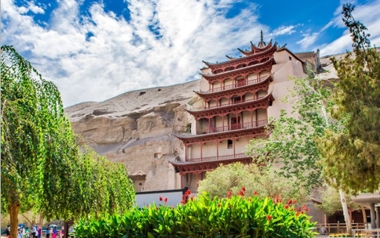 Dunhuang Mogao Grottoes
Dunhuang Mogao Grottoes 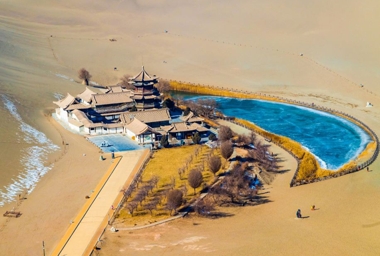 Minsha Mountain and Crescent Moon Spring
Minsha Mountain and Crescent Moon Spring
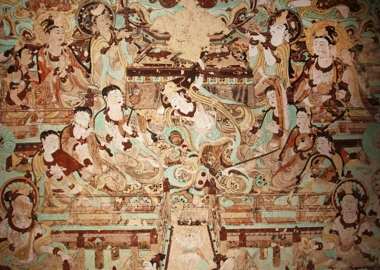 The Thousand Buddha Caves
The Thousand Buddha Caves  Yardang National Geologic Park
Yardang National Geologic Park
Recommended Gansu Tours
 West China Travel to Qinghai and Gansu
West China Travel to Qinghai and Gansu  Zhangye-Jiayuguan Pass-Dunhuang Tour
Zhangye-Jiayuguan Pass-Dunhuang Tour
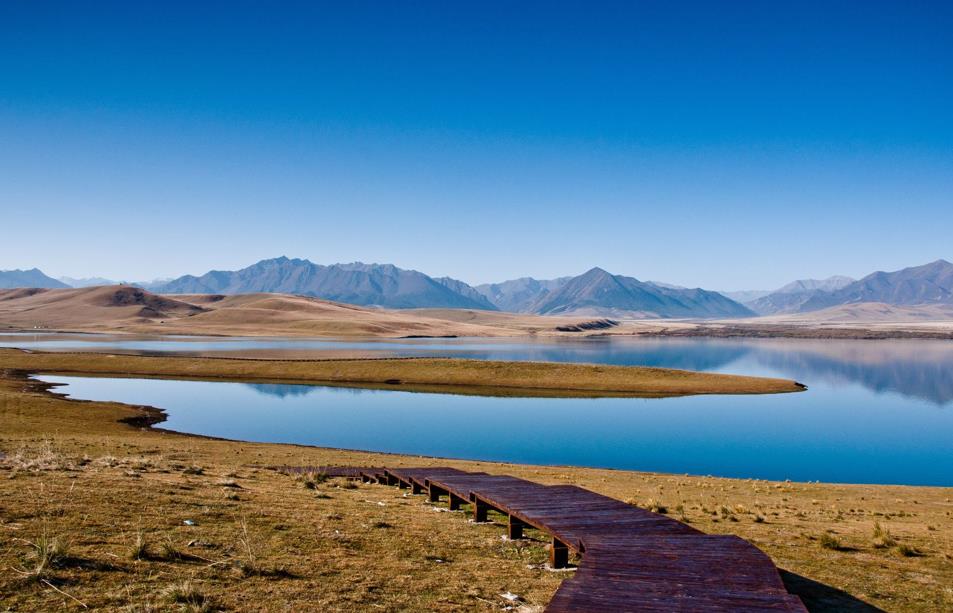 Silk Road Travel from Malaysia by Airasia
Silk Road Travel from Malaysia by Airasia 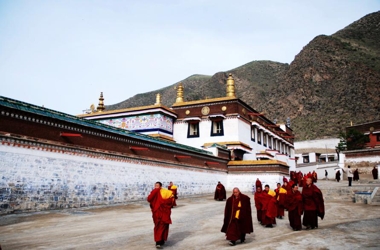 Binglingsi and Labrang Exploration
Binglingsi and Labrang Exploration
Introduction of the Great Wall:
The majestic and magnificent Great Wall is a great creation of ancient Chinese and the spirit of unceasing efforts to improve themselves of Chinese nationalities. In the Western Han Dynasty early, the length of the Great Wall of about one thousand kilometers was built through Zhangye, Ejina, Jinta, Jiayuguan Pass, Yumen, Anxi to Dunhuang of Hexi Corridor in order to defend the Central Plain from Xiongnu tribes harassing, guarding the central government, assuring the Silk Road unblocking.
Introduction of the Han Great Wall:
Located in the north of Dunhuang, there are branches of the Great Wall of the Han Dynasty, such as Yumenguan to Yangguan, Yangguan to Danghe River estuary. After more than 2,000 years of wind, rain and sand damage, some of the Great Wall was razed to the ground, and most of the Great Wall was preserved. Among them, the Great Wall of Danggu Tunnel, located on the west side of Yumenguan was well preserved. Its base is 3 metres wide, its residual height is 3 metres, and its top width is 1 metre, it is the most complete section of the Great Wall of the Han Dynasty.
Most of the Great Wall of the Han Dynasty was leveled in the past two thousand years inside Dunhuang with remaining track existed, only a small part of it had its old appearance. The methods of building the Great Wall were various and it was a creation that the Great Wall was built of clay, reeds, the branches of red willows together in the Han Dynasty. Along the Great Wall there remained fire beacons of ancient times, and it was said, a large-size beacon was set up within the distance of ten li and a small-size beacon was set up within the distance of five li. Piled fire woods were prepared to give smoke for an alarm when the enemy came. There remained piled fire woods of old-time near the fire beacons beside the Great Wall, which were solidified together and were as strong as stones after thousands of years passing.
The Structure of the Han Great Wall & Why is worth to visit?
The Great Wall of the Han Dynasty in Dunhuang made full use of the local advantages and geographical location for the material. Fortress walls were built by hamming at some places, while moats were dug at other places. Some legs are the pure natural screen, while others are simple beacon towers and fence-like defense works. Through huge ups and downs of 2,000-year weathering, sand covering and man-made damage, such great walls have completely changed their appearance. Some have been flattened with no sign of existence or just low bank of earth and ditches, so the past charm has disappeared. Only the beacon towers at their ruins are telling people of the trend and history of the Han fortress. Despite the historical regret of advancing sand and retreating human beings, we have more tourist attractions today as clues preserved for mourning the history.
The Admission fees: Free of Charge.
Opening Time:
From 8 AM to 6 PM
Beacon Tower:
Beacon towers are also called smoke towers among other names. In case of any information on the enemy, the towers will make smoke on the day or set fire at night, which is the fastest and most effective method for communication of military information during the ancient times. Besides an ancient alarming system, they can separately play the role of warning and defense. As an essential military defense system, it can be seen everywhere in Dunhuang.
What to visit in Beacon Tower?
Yangguan beacon is now 4.7 meters high, after two thousand years of wind and rain erosion. Nowadays, you can only see some historical sites such as docks, stables and ash piles and so on.
Other information about Beacon Tower:
Yangguan Beacon and Qingshiliang Beacon (respectively in the north and west of the antique beach), the Beacon Tower occupied the commanding heights and stand tall, overlooking the surroundings, the tower is quite stupendous. Meanwhile, it has been an important landmark since ancient times.
When is the best time to visit?
Every April to October is the best time to travel to Dunhuang. Among them, in Summer, the sun is very strong, so sunscreen products are quite essential.
In winter, the climate can be pretty cold, so you have to bring plenty of warm clothes.
The Admission fees: Free of Charge.
Opening Time:
9.00 AM to 8.00 PM (1st January to 31st December)
Related Articles & Posts
 Dunhuang Mogao Grottoes
Dunhuang Mogao Grottoes  Minsha Mountain and Crescent Moon Spring
Minsha Mountain and Crescent Moon Spring  The Thousand Buddha Caves
The Thousand Buddha Caves  Yardang National Geologic Park
Yardang National Geologic Park Recommended Gansu Tours
 West China Travel to Qinghai and Gansu
West China Travel to Qinghai and Gansu  Zhangye-Jiayuguan Pass-Dunhuang Tour
Zhangye-Jiayuguan Pass-Dunhuang Tour  Silk Road Travel from Malaysia by Airasia
Silk Road Travel from Malaysia by Airasia  Binglingsi and Labrang Exploration
Binglingsi and Labrang Exploration 
